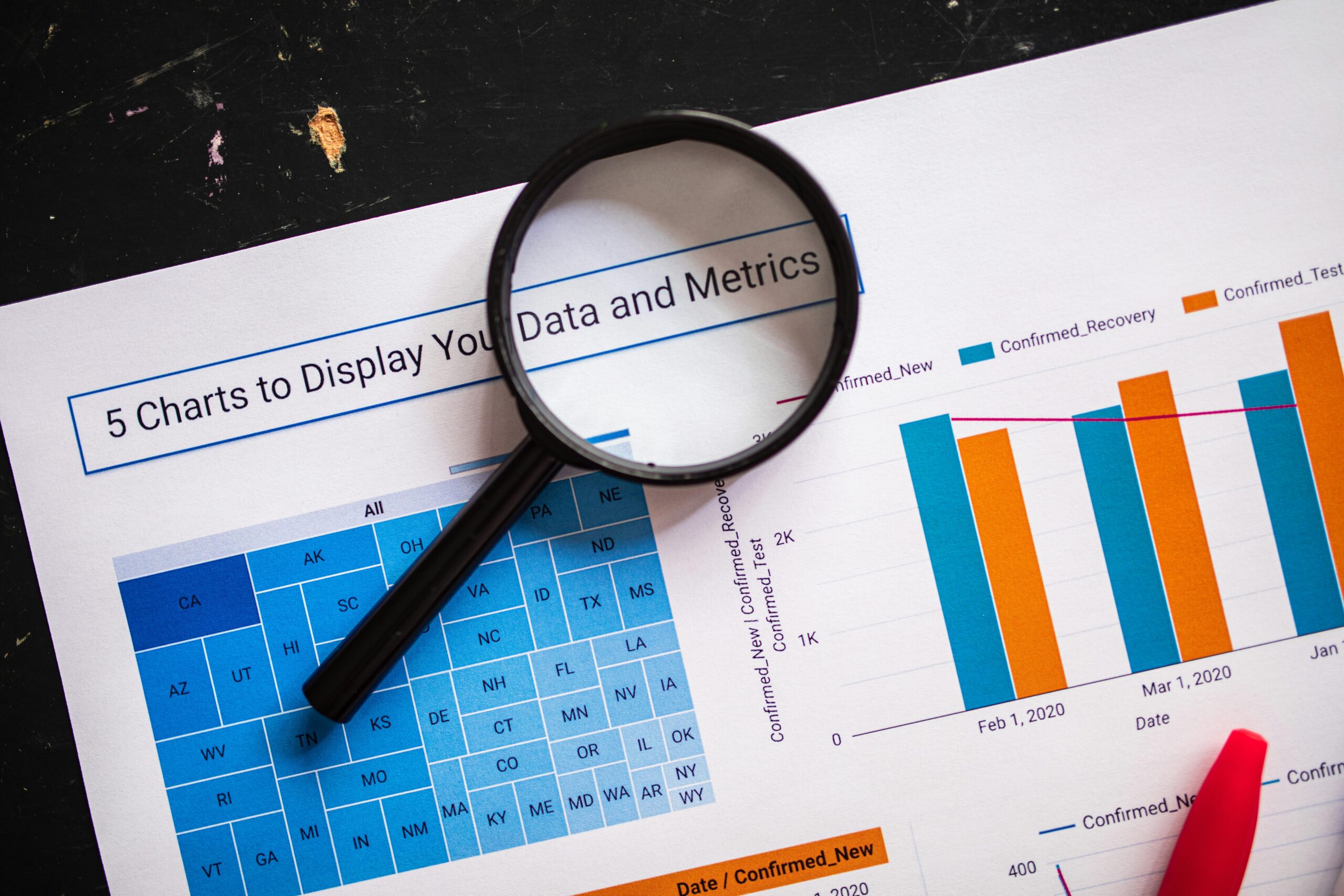Improve your Supply Chain Performance through KPI's redesign
How do you keep metrics relevant to stay ahead of tomorrow’s Supply Chain Operations?
This is a guide to upgrade your Supply Chain Performance by updating and reviewing its metrics (KPIs).

As a vital area of organizational management, Supply Chain requires diagnosis, measurement, monitoring, and continuous improvement. When searching for improvement there is one starting point: ‘how do you measure it?’. How can we know we are actually improving, efficiently and consistently delivering better results internally and to our customers over time?
This question encompasses what measuring business performance is all about. As the father of management, Peter Drucker puts it, “If we can’t measure it, we can’t manage it.” From elite athletes, top-tier sports professionals, and successful businessmen around, all share a common practice: they consistently track key metrics in order to enhance their performance; at Leanco Consulting, we follow the same principle because it elegantly works! if we cannot measure, we cannot improve it.
In a rapidly evolving and competitive environment, it is critical to keep your Supply Chain Key Performance Indicators (KPIs) up to date, Supply Chain is not static and today’s dynamics require metrics that give our business proper guidance. It is a good time to ask ourselves: When did we last assess the relevance of our performance indicators? How impactful are these metrics to our operations and customers lately? How pertinent and strategic are they to motivate our team? Are they aligned with your business goals? Is the accuracy of its data, the methods used to process this key information relevant today?
As your business and management grows, and your customers evolve, it is imperative to shift and adjust the way we collect and process information, reevaluate and measure what actually matters most, update and identify the right metrics and elements that actually bring value and drive better decision making.
Many articles of Supply Chain are focused on the main indicators and most popular KPIs to use right of the shelf. Instead, this article focuses on building methodologies, the preparation needed to start structuring, designing, updating and improving these metrics. KPIs mark the beginning of the analysis process, not the end. They help identify the root cause of an issue and guide the implementation of corrective actions.
Get a criteria for choosing Supply Chain KPIs
Based on a research done by APQC (American Productivity and Quality Center), one of the world’s top authorities in performance improvement; suggest we should consider five criteria for choosing KPIs:
- Strategic alignment—Does the measure directly link to organizational objectives?
- Reliability—Can we consistently gather inputs for the measure?
- Familiarity—Is it commonly used in our industry and/or have we collected it historically?
- Relevance—Can we track trends over time?
- Ease—How easy is it to collect and analyze this data?
Align KPIS with your business strategy and objectives
For strategic alignment, it is best to create a value path analysis that aligns measures with strategic objectives. Before implementing indicators, we need to understand our business strategy and align each department towards it. Prepare your Supply Chain tactically and start by defining what KPIS will be most useful to your business environment. Answering the questions above is a good starting point.
As a first step, your KPIs should be congruent and support your business objectives, mission and vision. Do they meet the criteria to your definition of success? Not all KPIs work the same way for similar businesses or industries. Not all companies have the same system, goals or collect information the same way. The process might be outdated or the data might not be relevant anymore.
To support the development of strategic business metrics, Kaplan and Norton, Professor at Harvard Business School and consultant, developed the ‘balanced scorecard’ that proposes a way to present performance from several perspectives at once, touching 4 important aspects that assist defining your main business strategy and goals:
- Learning & Growth perspective: How do customers see us?
- Business Processes perspective: What must we excel at?
- Customer perspective: Where can we continue to improve and create value?
- Financial perspective: How do we appear to shareholders?
By breaking down these perspectives, using metrics to answer each question, managers can determine whether improvements in one area have come at the expense of another, where the company stands and where it is headed.
Communicate Performance and promote engagement
In order to properly manage performance and metrics, we should have excellent channels of communication, ensuring that all different business departments and functions are in sync, sharing and working towards achieving the same vision and business goals. A great rule to clear communication is to ‘keep it simple’, when dealing with too many dashboards and data, it is best to keep it consistent and maintain less than 10 measures to include on a single dashboard.
When communicating changes or reviews, it will make sense to provide background information, history, projection and metric trends in order to provide context on the performance changes over time and between peer groups. Drill down into KPI components and the factors or root causes that affect the data in order to track and take corrective actions by main stakeholders, and decision makers.
Company measurement systems affect employee behaviors. KPIs itself can help the company to have the employees engaged, but it is wise to keep goals realistic, consistent and achievable. Recognition, incentives and rewards are linked to keep your workforce engaged and motivated, but it does not end there. Communicate and share how employees directly affect the performance of each indicator and provide a broader view on how they also affect the organization business goals. Organization leaders should promote a culture towards KPIS with an attitude of commitment instead of compliance.
Create Smarter KPIs
Digitalization and Analytics are changing the way we focus on our business strategy. Innovative approaches such as AI and Machine Learning are maximizing the impact of Supply Chain and KPIs by developing predicting tools to improve performance based on previous results.
In a rapidly changing environment and technology, Supply Chain is transforming the focus towards anticipating the future and integrating the view of the customer, providing predictive and prescriptive insights, rather than just retrospective evaluations. Companies that are data-driven and adapt their KPIs to leverage algorithms in a predictive way will gain significant competitive advantages.
An example of using data to make better predictions is considered in the Harvard Business article –A Simple way to modernize your Supply Chain, which describes going beyond KPIs and progressing into KPPs (Key Performance Predictors), emphasizing that the state of the supply changes so quickly that we should focus on metrics that look into the next 3-6 weeks, and not just the past. Aiming to identify and promptly respond to disruptions and deviations from the plan are critical to stay competitive.
A similar view is reinforced by Massachusetts Institute of Technology authors Schrage and Kiron, interviewing and surveying over 3,200 senior executives and taking a deep dive into the qualities of the next generation KPIs. They emphasize on the role of senior leaders on changing legacy and traditional KPI company practices into more innovative approaches: training data, redefining strategies, transforming processes through automation, and maximizing the impact of KPIs for future success.
Narrow down your Supply Chain KPIs
One of the best holistic ways to look at your Supply Chain Operations metrics is through a reference model designed by the Association for Supply Chain Management (APICS-ASCM), which has updated the model to SCOR DS recently, just to keep up with the advancements of Supply Chain Management. The original SCOR model recognizes six major processes: Plan, Source, Make, Deliver, Return and Enable. SCOR DS takes these processes further with major updates.
SCOR is already used by thousands of public and private organizations around the world to assess and improve their supply chains, directly leading to improved operational performance. It recognizes three performance categories (resilience, economic and sustainability), and eight performance attributes(reliability, responsiveness, agility, cost, profits, assets, environmental and social).
Each attribute is then broken down into smaller components with individual elements going beyond level-1 metrics calculations. Not all KPs, neither formulations are included here for comprehensibility reasons, but guidance and a summary taken from ASCM is provided in table below.
| CATEGORY | ATTRIBUTES | LEVEL-1 METRIC |
| Resilience: Customer-focus | Reliability | RL.1.1 Perfect Order Fulfillment RL.1.2 Perfect Supplier Order RL.1.3 Perfect Return Order Fulfillment |
| Responsiveness | RS.1.1 Order Fulfillment Cycle Time | |
| Agility | AG.1.1 Supply Chain Agility | |
Economic: Internal Processes & Economic-focused | Cost | CO.1.1 Total Supply Chain Management CO.1.2 Cost of Goods Sold (COGS) |
| Profit | PR.1.1 Earnings Before Interest and Taxes (EBIT) as a Percent of Revenue PR.1.2 Effective Tax Rate | |
| Asset Management | AM.1.1 Cash-to-Cash Cycle Time AM.1.2 Return on Fixed Assets AM.1.3 Return on Working Capital | |
Sustainability: Environment & Social-focused | Environmental | EV.1.1 Materials Used EV.1.2 Energy Consumed EV.1.3 Water Consumed EV.1.4 GHG Emissions EV.1.5 Waste Generated |
| Social | SC.1.1 Diversity and Inclusion SC.1.2 Wage Level SC.1.3 Training |
© APICS, Inc. 2024. APICS, ASCM, SCOR, and SCORmark are all registered trademarks of APICS, Inc. All rights reserved.
If you are looking for more granular details on each KPI calculation or if you would like an assessment, additional support to develop or upgrade your own performance indicators aligned with your strategy and goals, please reach us out at Leanco Consulting and schedule a free, no-commitment consultation or a discovery call. It is recommended that supply chain scorecards contain at least one metric for each performance attribute to ensure balanced decision-making and governance.
In Summary
To stay relevant, the key element of supply chain KPIs is to conduct evaluations of the measures at regular intervals, running programs that periodically review the quality of the metrics in use. Perform assessments that indicate whether the metrics remain aligned with your objectives, appropriate with your processes and accurate with your data. Consider if they should be replaced or eliminated to adapt to constant changes in the business as well as to match innovation and customer expectations.
Organization leaders should oversee these measurement evaluations to ensure they support the business strategy and serve to determine if the current performance indicators are operating efficiently, deploying innovative approaches and most importantly, providing value. The purpose to measure your performance is to continuously track and find innovative ways to improve. Improving is related to change, and change is linked to growth. Quoting from a a BCG article: “ To deliver long-term profitable growth across main business domains, you’ll need to be decisive and unsentimental, experimental and ambitious, prudent, and patient. And above all, you’ll need to be persistent.”
